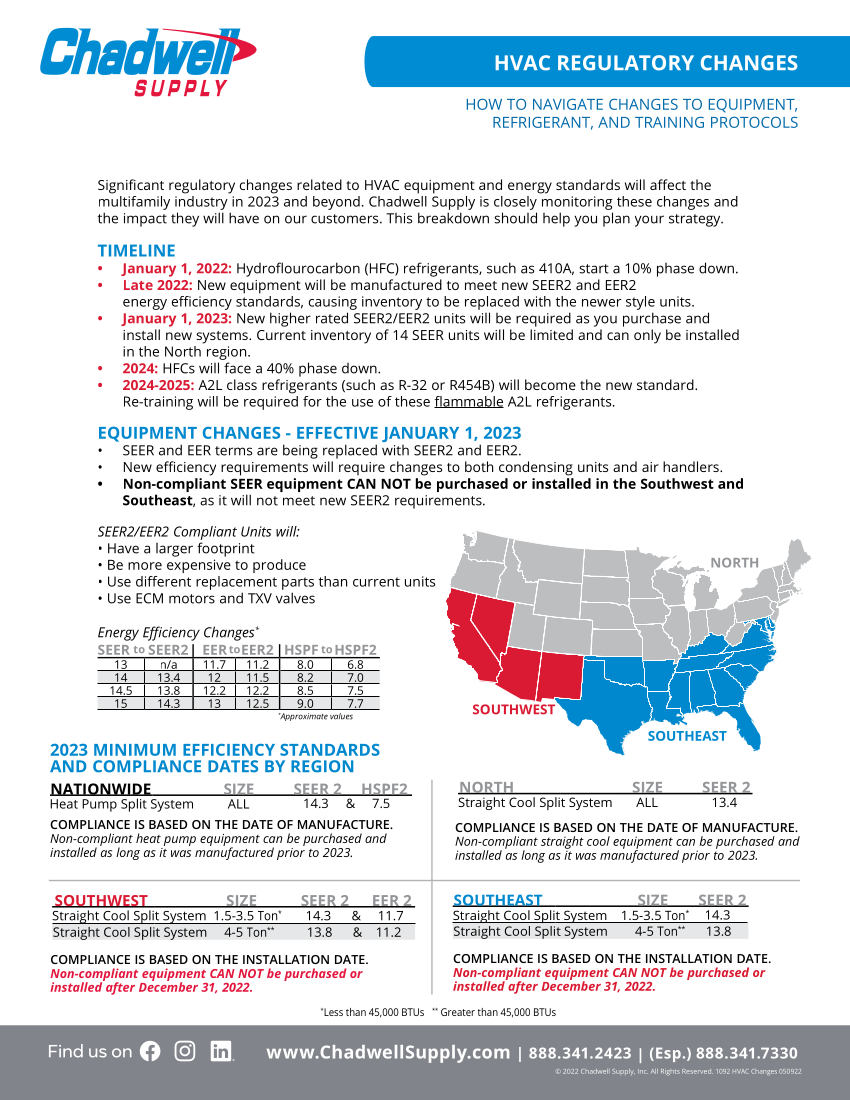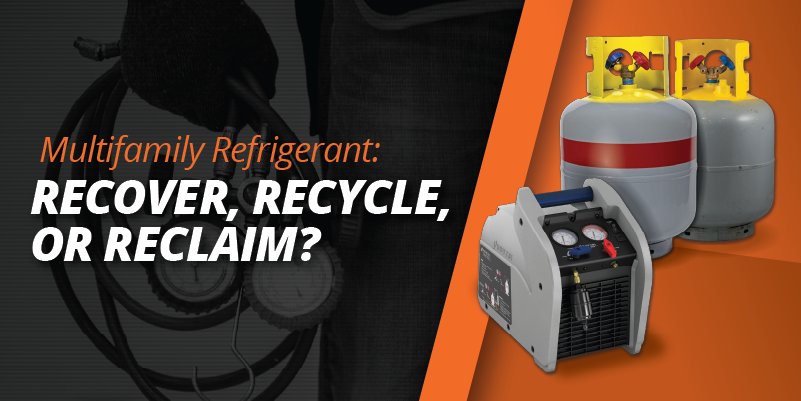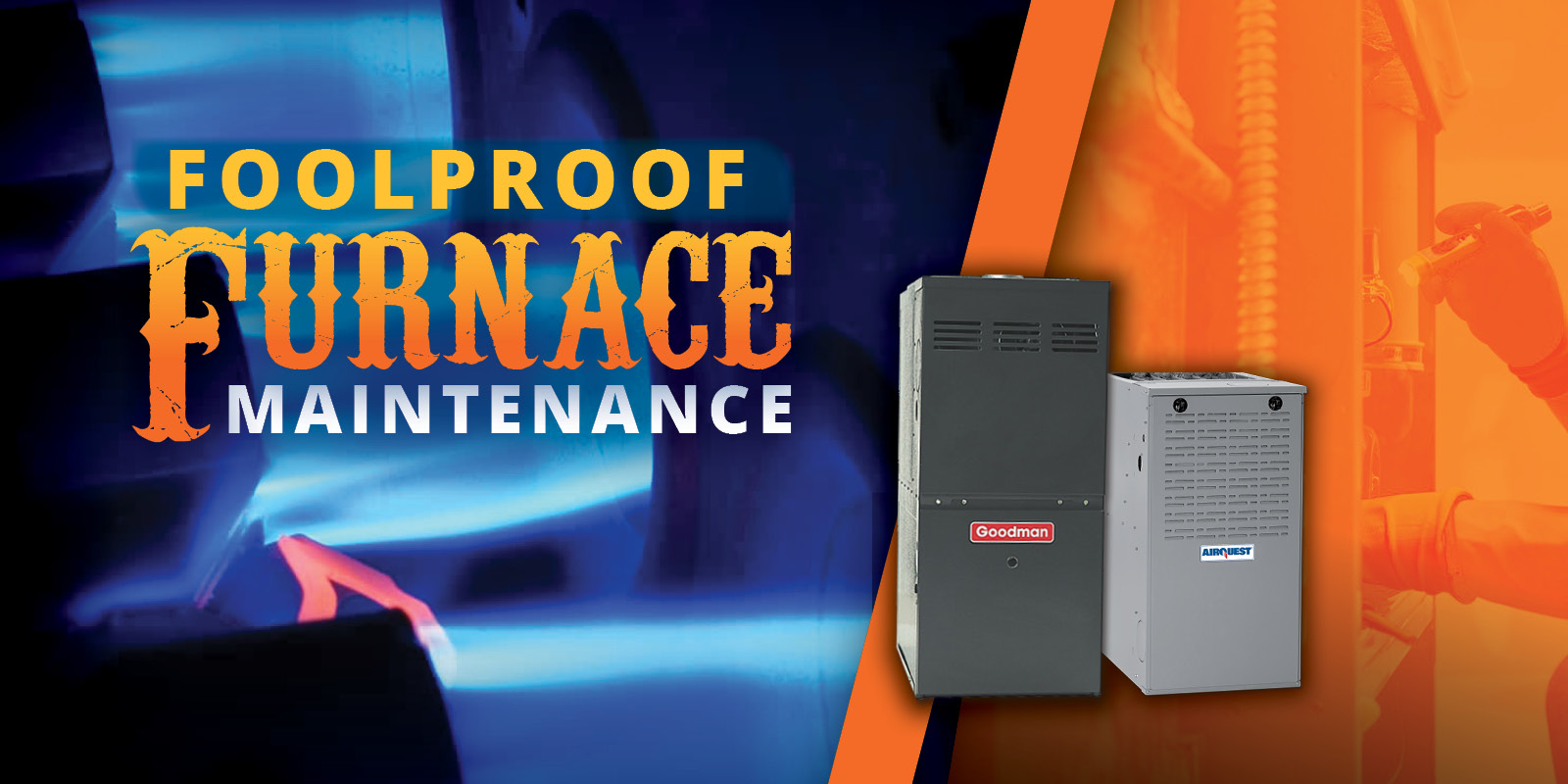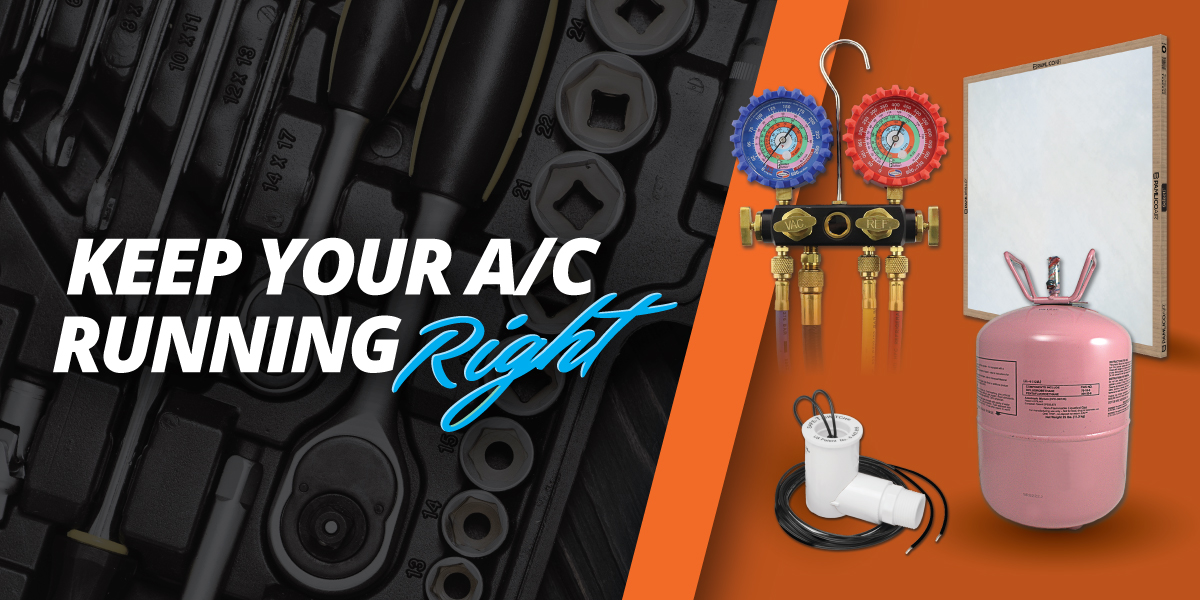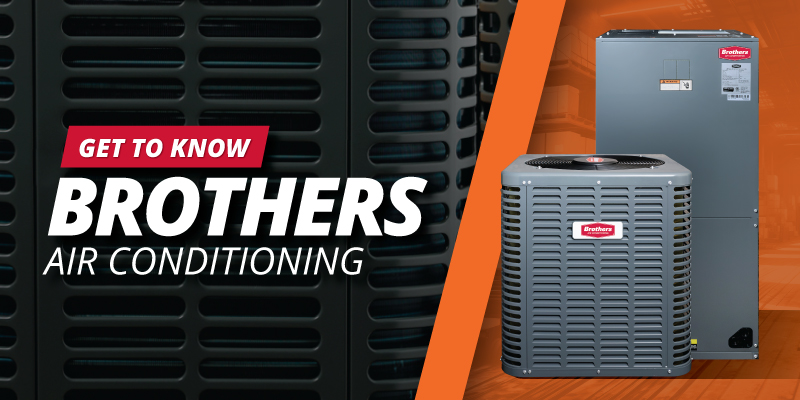HVAC Regulatory Changes 2023
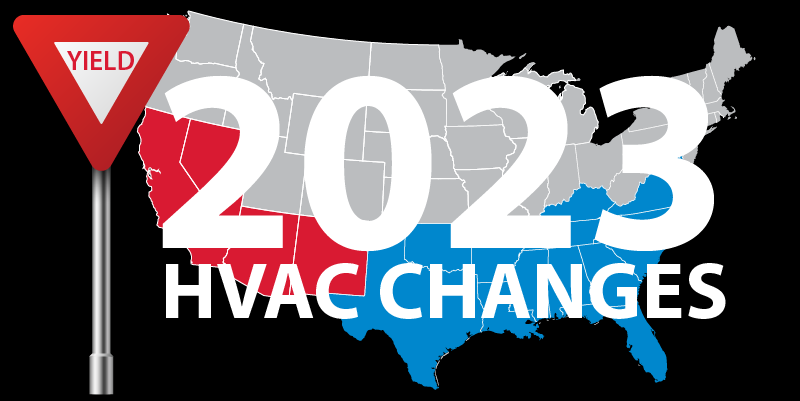
Changes are coming for HVAC equipment and energy standards. Here's how multifamily will be affected and what you need to know now.
Click Here to review FAQ from recent webinar sessions.
Significant regulatory changes related to HVAC equipment and energy standards will affect the multifamily industry in 2023 and beyond. Chadwell Supply is closely monitoring these changes and the impact they will have on our customers. This breakdown should help you plan your strategy.
TIMELINE FOR PLANNED REGULATORY CHANGES
- January 1, 2022: Hydrofluorocarbon (HFC) refrigerants, such as 410A, start a 10% phase down.
- Late 2022: New equipment will be manufactured to meet new SEER2, EER2, and HSPF2 energy efficiency standards, causing inventory to be replaced with the newer style units.
- January 1, 2023: New higher rated SEER2/EER2/HSPF2 units will be required as you purchase and install new systems. Current inventory of 14 SEER units will be limited and can only be installed in the North region.
- 2024: HFCs will face a 40% phase down.
- 2024-2025: A2L class refrigerants (such as R-32 or R454B) will become the new standard. Re-training will be required for the use of these flammable A2L refrigerants.
HVAC EQUIPMENT CHANGES (EFFECTIVE JANUARY 1, 2023)
- SEER, EER, and HSPF terms are being replaced with SEER2, EER2, and HSPF2.
- New efficiency requirements will require changes to both condensing units and air handlers.
- Non-compliant SEER equipment CAN NOT be sold or installed in the Southwest and Southeast, as it will not meet new SEER2 requirements.
SEER2/EER2 Compliant Units will:
- Have a larger footprint
- Be more expensive to produce
- Use different replacement parts than current units
- Use ECM motors and TXV valves
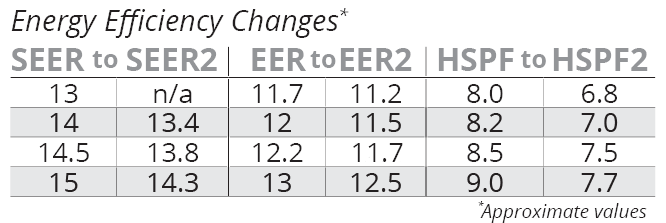
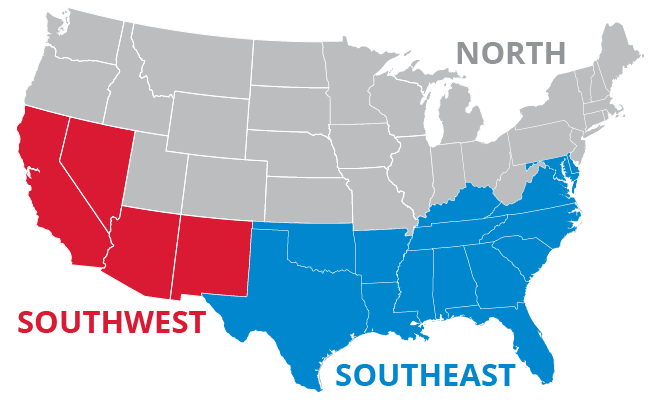
2023 MINIMUM EFFICIENCY STANDARDS AND
COMPLIANCE DATES BY REGION FOR SPLIT SYSTEMS

COMPLIANCE IS BASED ON THE DATE OF MANUFACTURE - Non-compliant heat pump equipment can be purchased and installed as long as it was manufactured prior to 2023.

COMPLIANCE IS BASED ON THE INSTALLATION DATE - Non-compliant equipment CAN NOT be purchased or installed after December 31, 2022.

COMPLIANCE IS BASED ON THE DATE OF MANUFACTURE - Non-compliant straight cool equipment can be purchased and installed as long as it was manufactured prior to 2023.

COMPLIANCE IS BASED ON THE INSTALLATION DATE - Non-compliant equipment CAN NOT be purchased or installed after December 31, 2022.
* Less than 45,000 BTUs **Greater than 45,000
BTUs Single Package Systems have different standards that are not covered here as they are not usually installed in multifamily applications.
REFRIGERANT CHANGES
As the use of Hydrofluorocarbon (HFC) refrigerants are phased down, users need to be aware of the switch to a new standard of A2L refrigerants with global warming potential (GWP) of 750 or less. While it is good to know this change is coming, the compliance requirement for the lower GWP does not take effect until January 2025.
This means A2L refrigerants will probably not be used in standard residential/multifamily HVAC equipment till mid-2024. This is the anticipated time frame for the new equipment that works with the lower GWP refrigerants to be introduced. Note: The exception is mini-split units; these are used in limited capacity within the multifamily industry and many
of these already use A2L refrigerants.
As HFCs are phased down:
- Prices will increase on ALL HFC blends as supply decreases.
- Do NOT expect to see replacements for 410A (as seen with R-22).
- Recovering and reusing 410A refrigerant will be more imperative than ever. (Note: Refrigerant is only allowed to be reused by the same equipment owner.)
As A2Ls are phased in:
- Re-training will be needed due to the potential for flammability and new processes for evacuation and brazing.
- Refrigerant recovery will be critial and new equipment may be needed:
- HVAC gauges that read A2L refrigerants.
- Recovery equipment (cylinders, reverse thread adapters, etc.)
- Larger recovery hoses for faster triple evacuation
- It is recommended that systems be triple pressure tested with nitrogen followed by a triple evacuation.
TRAINING REQUIREMENTS
A2L refrigerants are flammable, and for this reason alone, training to create awareness of this danger will be necessary to ensure that the refrigerant is handled safely. While A2Ls are in the lower flammability class and could burn when exposed to an ignition source, they will probably not explode into flames, as other Class 2 or 3 refrigerants may.
These refrigerants will also have different temperatures and pressures than HFC refrigerants, will require the use of different gauges, have different evacuation procedures, and should have brazing with nitrogen in order to work effectively.
Chadwell Supply will offer A2L refrigerant training through Chadwell University beginning in 2024.
Download the shareable PDF resource here.
You can also share this page on social media or with your team.
Click here to see Questions and Answers from live webinar sessions.
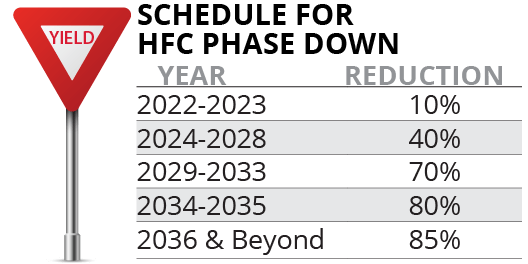
HFC Refrigerants in phase down:
> R-410A
> R-134A
> R-22 replacements
- R421-A
- NU-22B
- R-422B+
- MO99 & R-438A
- R-407C
A2L Refrigerants to be used:
> R-32
- Selected by Goodman, Amana, and Daikin
- Single ingredient (similar to R22)
- 675 GWP AR4
> R-454B
- Selected by Carrier & Honeywell
- Patented blend of refrigerants
- 466 GWP AR4


